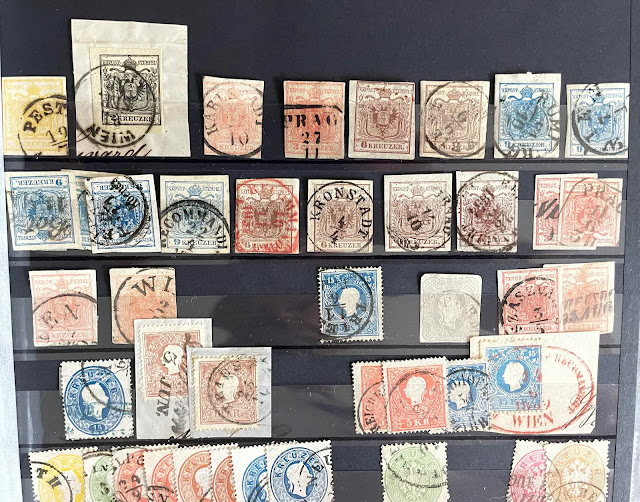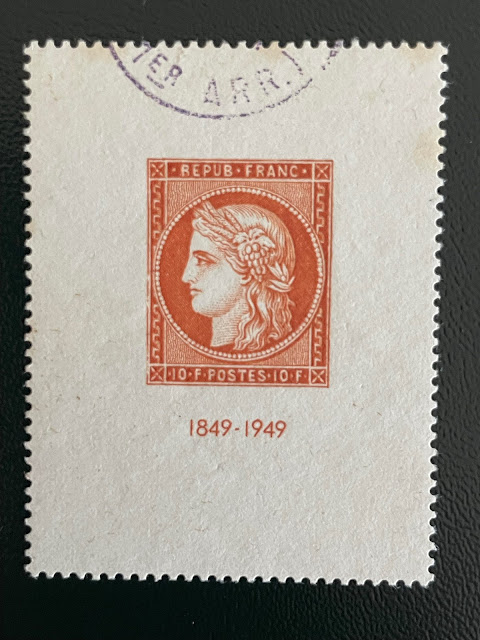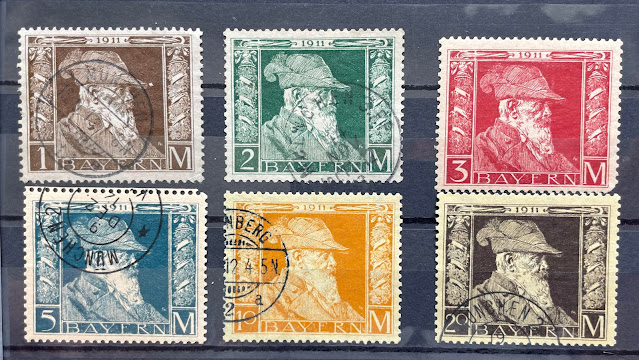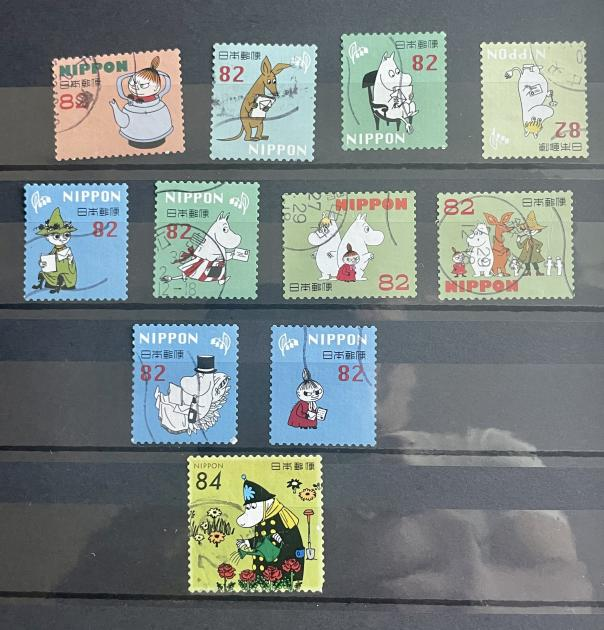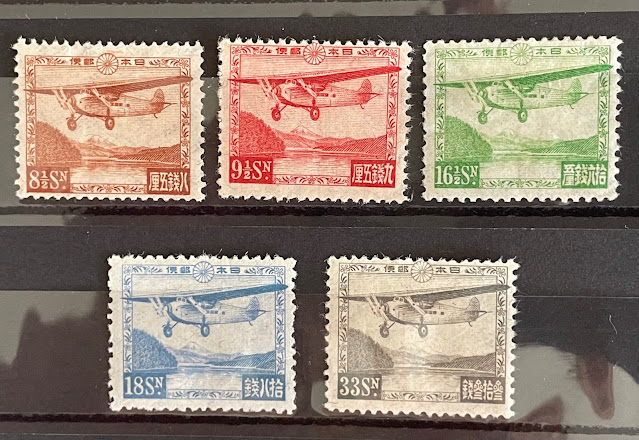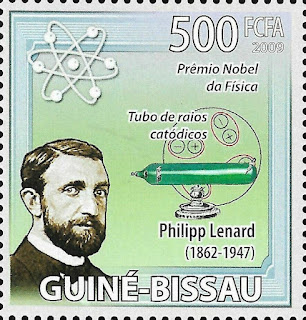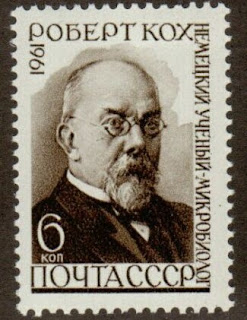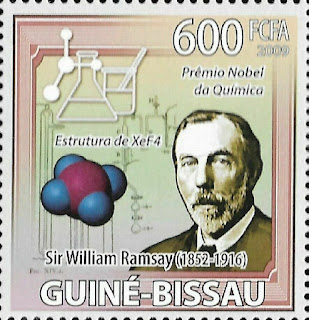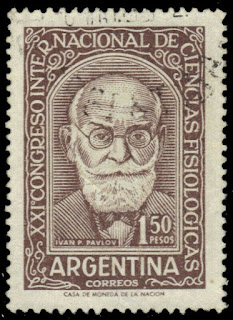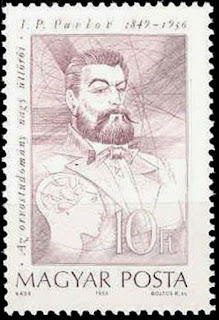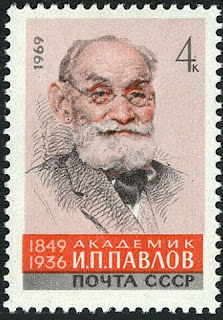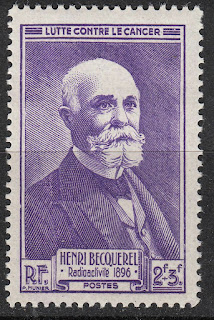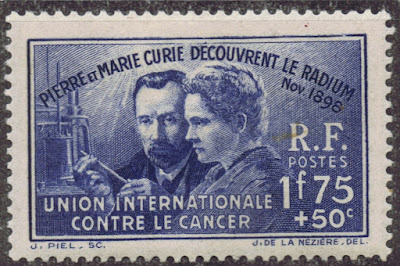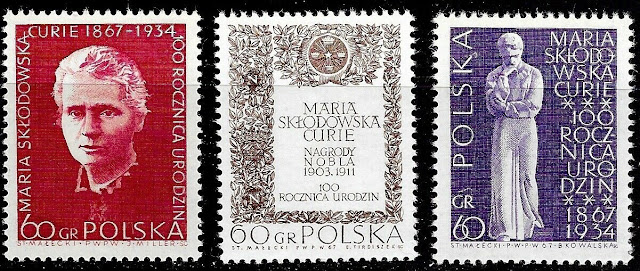The Nobel Prizes (Swedish: Nobelpriset, Norwegian: Nobelprisen) are prizes awarded annually by the Royal Swedish Academy of Sciences, the Swedish Academy, the Karolinska Institutet, and the Norwegian Nobel Committee to individuals and organizations who make outstanding contributions in the fields of chemistry, physics, literature, peace, and physiology or medicine. They were established by the 1895 will of Alfred Nobel, which dictates that the awards should be administered by the Nobel Foundation. The Nobel Memorial Prize in Economic Sciences was established in 1968 by the Sveriges Riksbank, the central bank of Sweden, for contributions to the field of economics. Each recipient, or "laureate", receives a gold medal, a diploma, and a sum of money, which is decided annually by the Nobel Foundation
Here is a list of 1903 Nobel laureates
Physics: Henri Becquerel, French physicist and chemist
Antoine Henri Becquerel (15 December 1852 – 25 August 1908) was a French engineer, physicist, scientist, Nobel laureate, and the first person to discover evidence of radioactivity. For work in this field he, along with Marie Skłodowska-Curie (Marie Curie) and Pierre Curie, received the 1903 Nobel Prize in Physics.
In 1889, Becquerel became a member of the Académie des Sciences. In 1900, Becquerel won the Rumford Medal for his discovery of the radioactivity of uranium and he was made an Officer of the Legion of Honour. The Berlin-Brandenburg Academy of Sciences and Humanities awarded him the Helmholtz Medal in 1901. In 1903, Henri shared a Nobel Prize in Physics with Pierre Curie and Marie Curie for the discovery of spontaneous radioactivity. In 1905, he was awarded the Barnard Medal by the U.S. National Academy of Sciences. In 1906, Henri was elected Vice Chairman of the academy, and in 1908, the year of his death, Becquerel was elected Permanent Secretary of the Académie des Sciences. During his lifetime, Becquerel was honored with membership into the Accademia dei Lincei and the Royal Academy of Berlin. Becquerel was elected a Foreign Member of the Royal Society (ForMemRS) in 1908. Becquerel has been honored with being the namesake of many different scientific discoveries. The SI unit for radioactivity, the becquerel (Bq), is named after him. There is a crater named Becquerel on the Moon and also a crater named Becquerel on Mars. The uranium-based mineral becquerelite was named after Henri.
French stamp depicting Henri Becquerel
Physics: Marie Curie, Polish chemist and physicist, Nobel Prize laureate
Marie Skłodowska Curie(born Maria Salomea Skłodowska; 7 November 1867 – 4 July 1934) was a Polish and naturalized-French physicist and chemist who conducted pioneering research on radioactivity. She was the first woman to win a Nobel Prize, is the only woman to win the Nobel prize twice, and is the only person to win the Nobel Prize in two different scientific fields. She was part of the Curie family legacy of five Nobel Prizes. She was also the first woman to become a professor at the University of Paris, and in 1995 became the first woman to be entombed on her own merits in the Panthéon in Paris.
She was born in Warsaw, in what was then the Kingdom of Poland, part of the Russian Empire. She studied at Warsaw's clandestine Flying University and began her practical scientific training in Warsaw. In 1891, aged 24, she followed her older sister Bronisława to study in Paris, where she earned her higher degrees and conducted her subsequent scientific work. She shared the 1903 Nobel Prize in Physics with her husband Pierre Curie and physicist Henri Becquerel. She won the 1911 Nobel Prize in Chemistry.
Her achievements included the development of the theory of radioactivity (a term she coined), techniques for isolating radioactive isotopes, and the discovery of two elements, polonium and radium. Under her direction, the world's first studies were conducted into the treatment of neoplasms using radioactive isotopes. She founded the Curie Institutes in Paris and in Warsaw, which remain major centres of medical research today. During World War I she developed mobile radiography units to provide X-ray services to field hospitals.
While a French citizen, Marie Skłodowska Curie, who used both surnames, never lost her sense of Polish identity. She taught her daughters the Polish language and took them on visits to Poland. She named the first chemical element she discovered polonium, after her native country.
Marie Curie died in 1934, aged 66, at a sanatorium in Sancellemoz (Haute-Savoie), France, of aplastic anemia from exposure to radiation in the course of her scientific research and in the course of her radiological work at field hospitals during World War I
Stamps from Monaco, France and Poland depicting Marie Curie
Physics: Pierre Curie, French physicist and academic
Pierre Curie (15 May 1859 – 19 April 1906) was a French physicist, a pioneer in crystallography, magnetism, piezoelectricity, and radioactivity. In 1903, he received the Nobel Prize in Physics with his wife, Marie Skłodowska-Curie, and Henri Becquerel, "in recognition of the extraordinary services they have rendered by their joint researches on the radiation phenomena discovered by Professor Henri Becquerel".
French stamp depicting Pierre and Marie Curie
Bulgarian stamp depicting Pierre Curie

Chemistry: Svante Arrhenius, Swedish physicist and chemist
Svante August Arrhenius (19 February 1859 – 2 October 1927) was a Swedish scientist. Originally a physicist, but often referred to as a chemist, Arrhenius was one of the founders of the science of physical chemistry. He received the Nobel Prize for Chemistry in 1903, becoming the first Swedish Nobel laureate. In 1905, he became director of the Nobel Institute, where he remained until his death.
Arrhenius was the first to use principles of physical chemistry to estimate the extent to which increases in atmospheric carbon dioxide are responsible for the Earth's increasing surface temperature. In the 1960s, Charles David Keeling demonstrated that the quantity of human-caused carbon dioxide emissions into the air is enough to cause global warming.
The Arrhenius equation, Arrhenius acid, Arrhenius base, lunar crater Arrhenius, Martian crater Arrhenius, the mountain of Arrheniusfjellet, and the Arrhenius Labs at Stockholm University were so named to commemorate his contributions to science.
Swedish stamps depicting Svante Arrhenius
Physiology or Medicine: Niels Ryberg Finsen, Faroese-Danish physician and educator
Niels Ryberg Finsen (15 December 1860 – 24 September 1904) was a Danish-Faroese physician and scientist. In 1903, he was awarded the Nobel Prize in Medicine and Physiology "in recognition of his contribution to the treatment of diseases, especially lupus vulgaris, with concentrated light radiation, whereby he has opened a new avenue for medical science."
In 1882, Finsen moved to Copenhagen to study medicine at the University of Copenhagen, from which he graduated in 1890. Because he had studied in Iceland before moving to Copenhagen to study, he enjoyed privileged admission to Regensen, which is the most prestigious college dormitory in Denmark. Priotisation of Icelandic and Faroese individuals in the admission process was official Danish government policy that had been put in place in order to integrate the educated elites of its colonies with the university population in Copenhagen. Following graduation, he became a prosector of anatomy at the university. After three years, he quit the post to devote himself fully to his scientific studies. In 1898 Finsen was given a professorship and in 1899 he became a Knight of the Order of Dannebrog.
The Finsen Institute was founded in 1896, with Finsen serving as its first director. It was later merged into Copenhagen University Hospital and currently serves as a cancer research laboratory that specializes in proteolysis.
Finsen suffered from Niemann–Pick disease, which inspired him to sunbathe and investigate the effects of light on living things. As a result, Finsen is best known for his theory of phototherapy, in which certain wavelengths of light can have beneficial medical effects. His most notable writings were Finsen Om Lysets Indvirkninger paa Huden ("On the effects of light on the skin"), published in 1893 and Om Anvendelse i Medicinen af koncentrerede kemiske Lysstraaler ("The use of concentrated chemical light rays in medicine"), published in 1896. The papers were rapidly translated and published in both German and French. In his late work he researched the effects of sodium chloride, observing the results of a low sodium diet, which he published in 1904 as En Ophobning af Salt i Organismen ("An accumulation of salt in the organism").
Finsen won the Nobel Prize in Physiology in 1903 for his work on phototherapy. He was the first Scandinavian to win the prize and is the only Faroese Nobel Laureate to date. In 1904, Finsen was awarded the Cameron Prize for Therapeutics of the University of Edinburgh.
Stamps from Denmark and the Faroe Island depicting Niels Ryberg Finsen
Literature: Bjørnstjerne Bjørnson, Norwegian-French author and playwright
Bjørnstjerne Martinius Bjørnson (8 December 1832 – 26 April 1910) was a Norwegian writer who received the 1903 Nobel Prize in Literature "as a tribute to his noble, magnificent and versatile poetry, which has always been distinguished by both the freshness of its inspiration and the rare purity of its spirit", becoming the first Norwegian Nobel laureate.
He was a prolific polemicist and extremely influential in Norwegian public life and Scandinavian cultural debate. Bjørnson is considered to be one of The Four Greats (De Fire Store) among Norwegian writers, the others being Henrik Ibsen, Jonas Lie, and Alexander Kielland. Bjørnson is also celebrated for his lyrics to the Norwegian National Anthem, "Ja, vi elsker dette landet". Composer Fredrikke Waaler based a composition for voice and piano (Spinnersken) on text by Bjørnson.
Norwegian stamps depicting Bjørnstjerne Bjørnson
Peace: Randal Cremer, English activist and politician
Sir William Randal Cremer (18 March 1828 – 22 July 1908) usually known by his middle name "Randal", was an English Liberal Member of Parliament, a pacifist, and a leading advocate for international arbitration. He was awarded the Nobel Peace Prize in 1903 for his work with the international arbitration movement.
From as early as his first unsuccessful run for Parliament in 1868, Cremer had advocated the expansion of international arbitration as peaceful alternative to war for the resolution of disputes.
He was elected as Liberal Member of Parliament (MP) for Haggerston in the Shoreditch district of Hackney from 1885 to 1895, and then from 1900 until his death from pneumonia in 1908.
Using his platform as an MP, Cremer cultivated allies on both continental Europe and across the Atlantic, including Frédéric Passy, William Jennings Bryan and Andrew Carnegie. Using his network of contacts and his talent for organisation, Cremer did much to create and expand institutions for international arbitration, which during his lifetime were successful in peacefully resolving numerous international disputes. This work includes co-founding the Inter-Parliamentary Union and the International Arbitration League; gaining acceptance for the 1897 Olney–Pauncefote Treaty between the United States and Britain that would have required arbitration of major disputes as the Essequibo territory (the treaty was rejected by the US Senate and never went into effect); and preparing the ground for the Hague peace conferences of 1899 and 1907.
In recognition of his work in the arbitration movement, Cremer won the Nobel Peace Prize, the first to do so solo, in 1903. Of the £8,000 award he donated £7,000 as an endowment for the International Arbitration League.
He also was named a Chevalier of the French Légion d'honneur, won the Norwegian Knighthood of Saint Olaf and was knighted in 1907.
Stamp issued by Guinea Bissau depicting Randal Cremer




